News
At the 66th Annual Meeting of the Japan Society for Atmospheric Environment, Kotaro Sato received the Excellent Presentation Award for Students and Young Researchers (Poster Presentation Division).
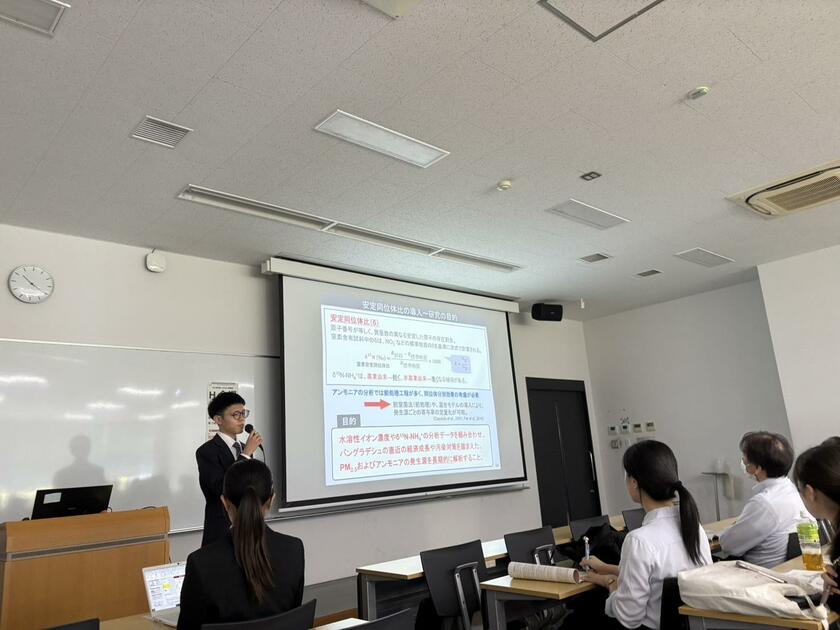
Participation in the 66th Annual Meeting of the Japan Society for Atmospheric Environment
From September 17 to 19, 2025, the 66th Annual Meeting of the Japan Society for Atmospheric Environment was held at Nagoya University Higashiyama Campus. At this meeting, Mr. Kotaro Sato (Master’s Program in Systems Engineering, Graduate School of Science and Engineering) presented a poster, and Ms. Mugi Sawabe (Master’s Program in Systems Engineering, Graduate School of Science and Engineering) gave an oral presentation.
The Japan Society for Atmospheric Environment (JSAE), established in 1974, is dedicated to the protection and improvement of atmospheric environments. The society promotes academic and technical research and the exchange of information on a wide range of topics including the causes of air pollution, environmental impact assessment, environmental policy, and the development of measurement and analytical technologies. It contributes to academic progress through the publication of its journals Journal of Japan Society for Atmospheric Environment and Asian Journal of Atmospheric Environment, as well as through the organization of annual meetings and symposia that foster collaboration among researchers and engineers in Japan and abroad.
Notably, Mr. Kotaro Sato received the Outstanding Presentation Award (Poster Presentation Category) for Students and Young Researchers at this year’s meeting.
Comment from Mr. Kotaro Sato
I am deeply honored to have received the Poster Presentation Award at the 66th Annual Meeting of the Japan Society for Atmospheric Environment. I sincerely thank all those who provided me with valuable comments and feedback during my presentation.
My presentation was entitled ‘Measurement of Carbonaceous Components in PM2.5 and Source Apportionment in Dhaka, Bangladesh, Using GC/MS’. This study focused on Dhaka, one of the most severely polluted cities in the world, with the aim of identifying the sources of PM2.5. In particular, I investigated the major carbonaceous components such as organic carbon (OC) and elemental carbon (EC), analyzing their long-term concentration trends. The results revealed a clear seasonal pattern, with PM2.5 concentrations rising markedly during the dry season and decreasing during the rainy season. Furthermore, analysis suggested that biomass burning and other biogenic sources make substantial contributions to PM2.5 during the dry season.
During the poster session, many researchers stopped by, and I received sharp questions and helpful advice from diverse perspectives regarding both measurement techniques and data interpretation. Explaining my work helped me clarify the issues I need to address for future research and publications. I was also greatly encouraged when researchers from other fields commented that my study is important for protecting human health.
In addition, I learned a great deal from presentations on air pollution in various Asian cities, which highlighted the differences in pollution characteristics among regions.
Throughout the conference, I had the valuable opportunity to dine with my supervisor, Professor Kawashima, as well as professors from other universities and researchers from industry. I gained insights into the challenges of conducting overseas field studies and the importance of returning research outcomes to society. These interactions were highly meaningful and taught me important lessons about the mindset required as a researcher.
Comment from Ms. Mugi Sawabe
My presentation was entitled ‘Source Apportionment of PM2.5 in Urban Bangladesh Using Water-Soluble Ions and Nitrogen Stable Isotope Ratios’. In this study, we analyzed PM2.5 samples collected in Dhaka, Bangladesh, where air pollution is extremely severe, focusing on the emission sources of ammonia gas (NH₃). We examined long-term trends over the past five years, including the period before and after the COVID-19 pandemic. Using the concentrations of PM2.5 and water-soluble ions, along with nitrogen stable isotope ratios (δ¹⁵N) of ammonium, we found that average annual PM2.5 concentrations increased by more than 20 μg/m³ after the pandemic. The results also indicated that 60–70% of NH₃ emissions originated from agricultural sources such as fertilizers and waste, though biomass burning is also suspected to play a role. Future work will take this factor into account and include comparisons with other regions.
Preparing for the presentation was a considerable challenge, particularly in deciding which results to highlight from a large dataset, ensuring the conclusions were not overstated, and presenting the content in a way that would be understandable even to those unfamiliar with isotope analysis. Through repeated revisions and practice, however, I was able to deliver my presentation confidently and felt a strong sense of accomplishment. At the same time, I recognized areas where my understanding was still lacking, which gave me both frustration and motivation for further research.
During the three days of the conference, I attended a wide variety of talks ranging from topics closely related to my research to those in distant fields. This experience broadened my knowledge and gave me new perspectives on how environmental research is approached differently across subfields. It was also inspiring to connect with fellow researchers and share both the joys and challenges of research life. Realizing that hundreds of people in that venue had also worked tirelessly on their studies underscored for me the depth and intensity of the research community.
Finally, I would like to express my deepest gratitude to Professor Hiroto Kawashima for his guidance and repeated practice sessions, to Professor Salam and colleagues at the University of Dhaka for their assistance with sample collection, to our alumnus Mr. Kato for his helpful discussions on data analysis, and to all my labmates who have worked alongside me throughout this project.
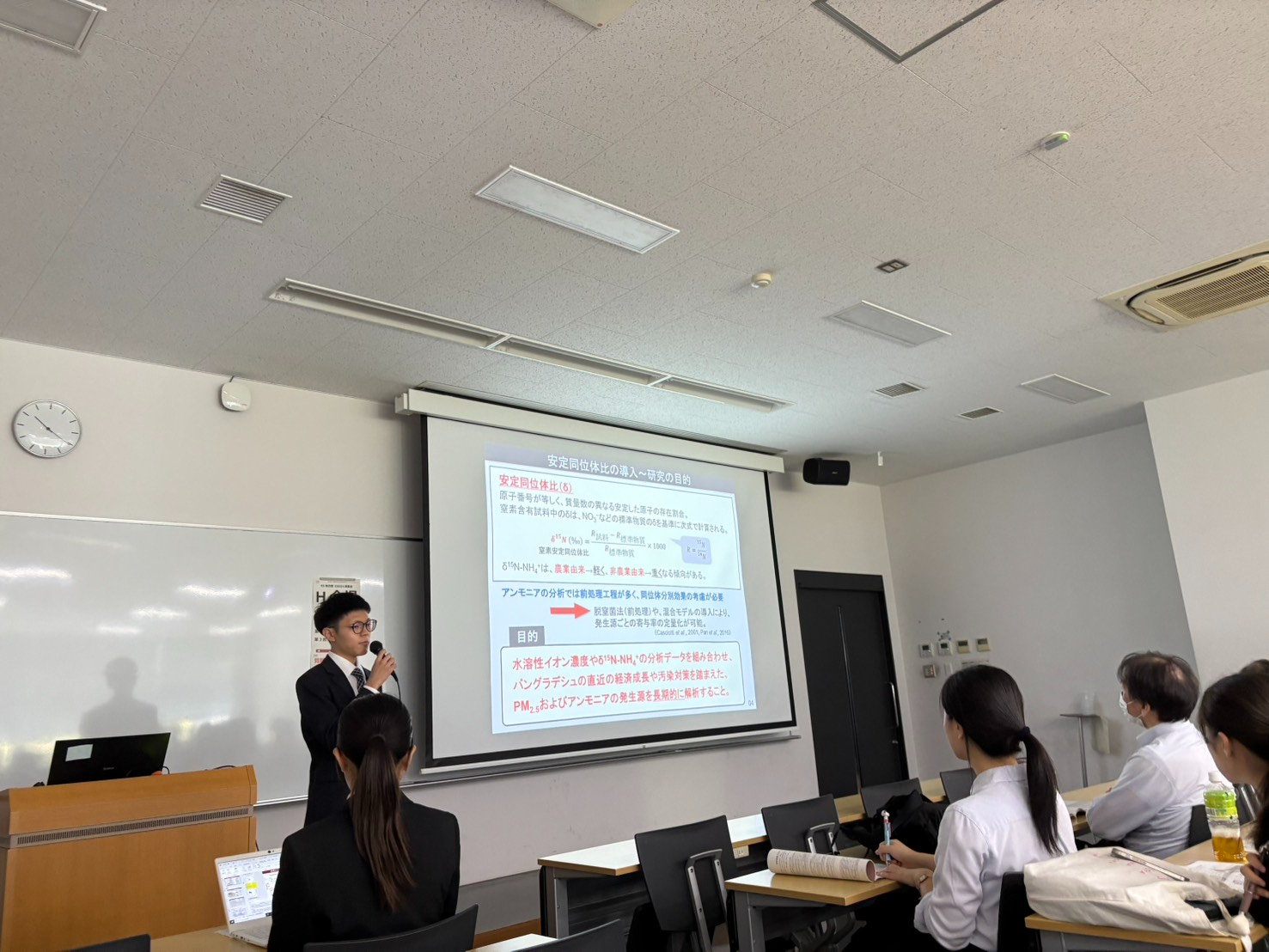 | 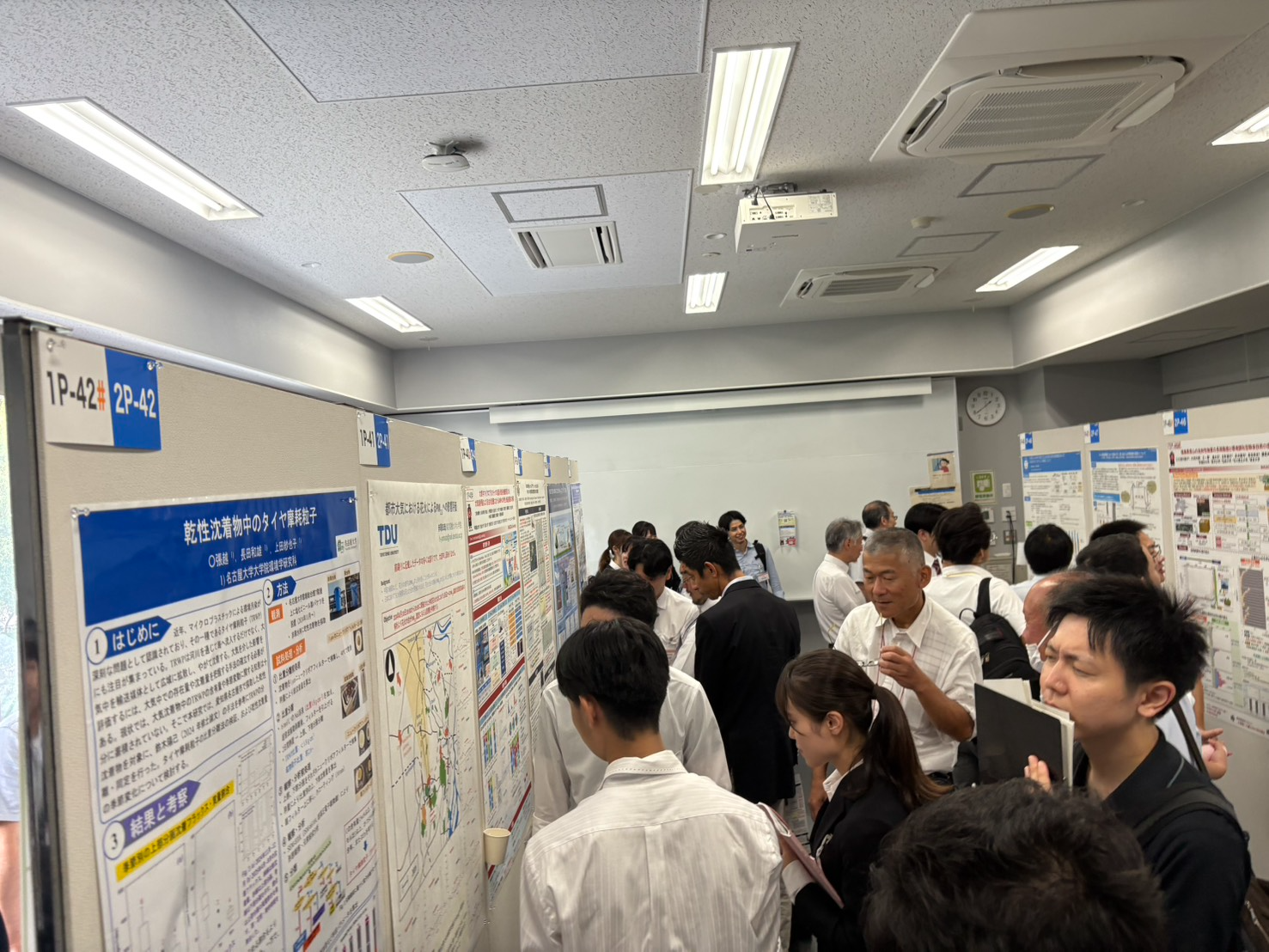 |
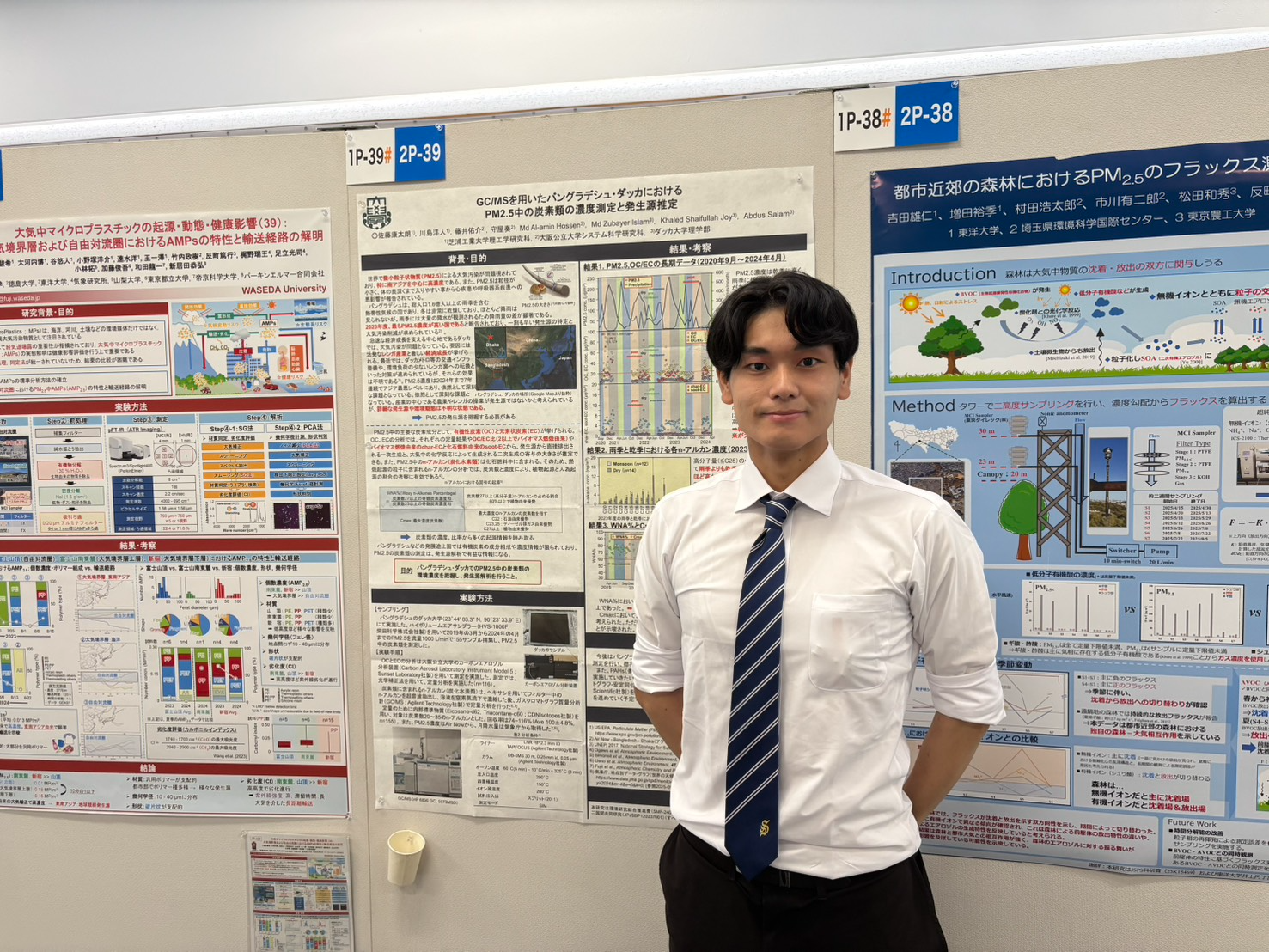 | 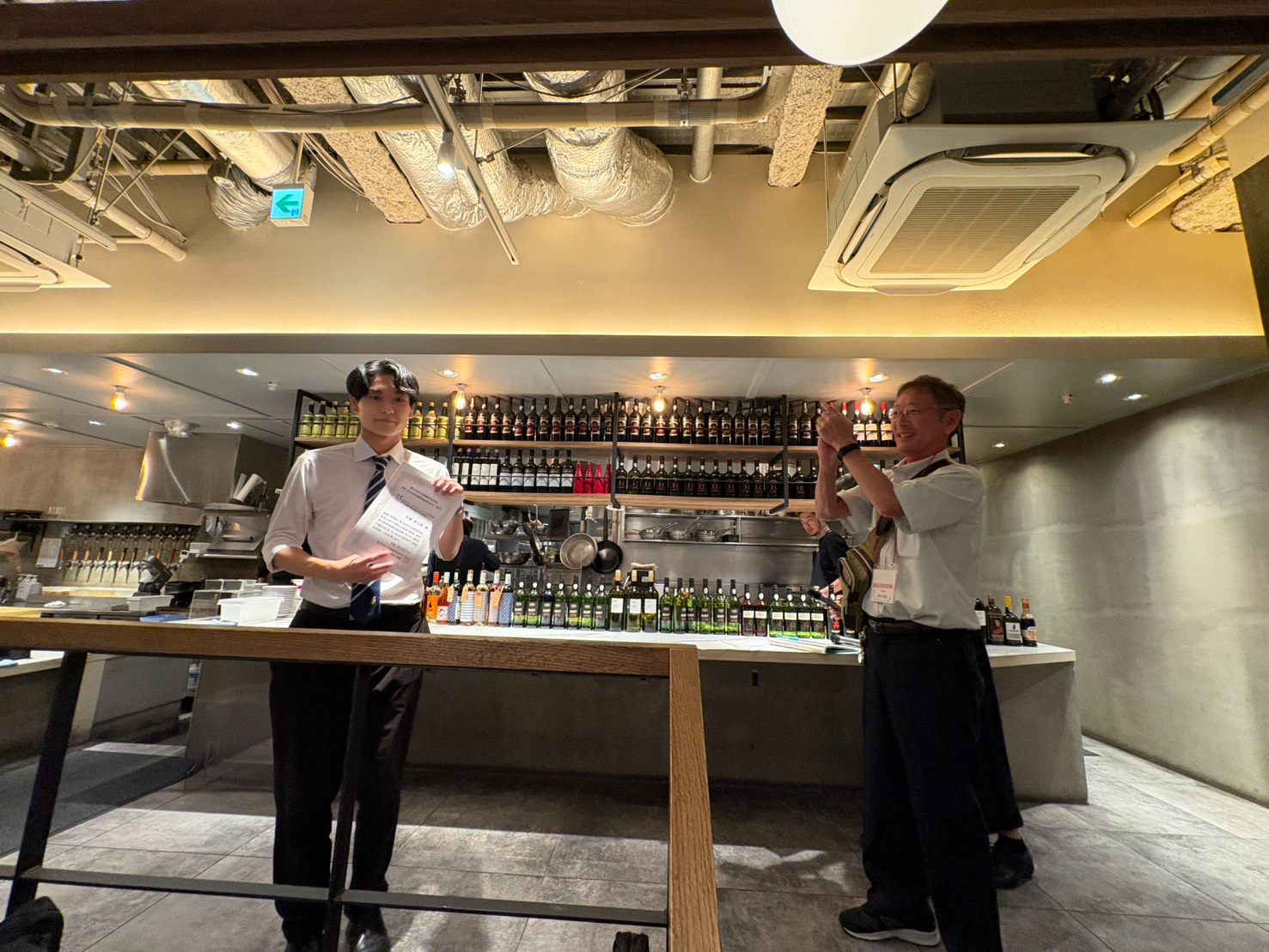 |
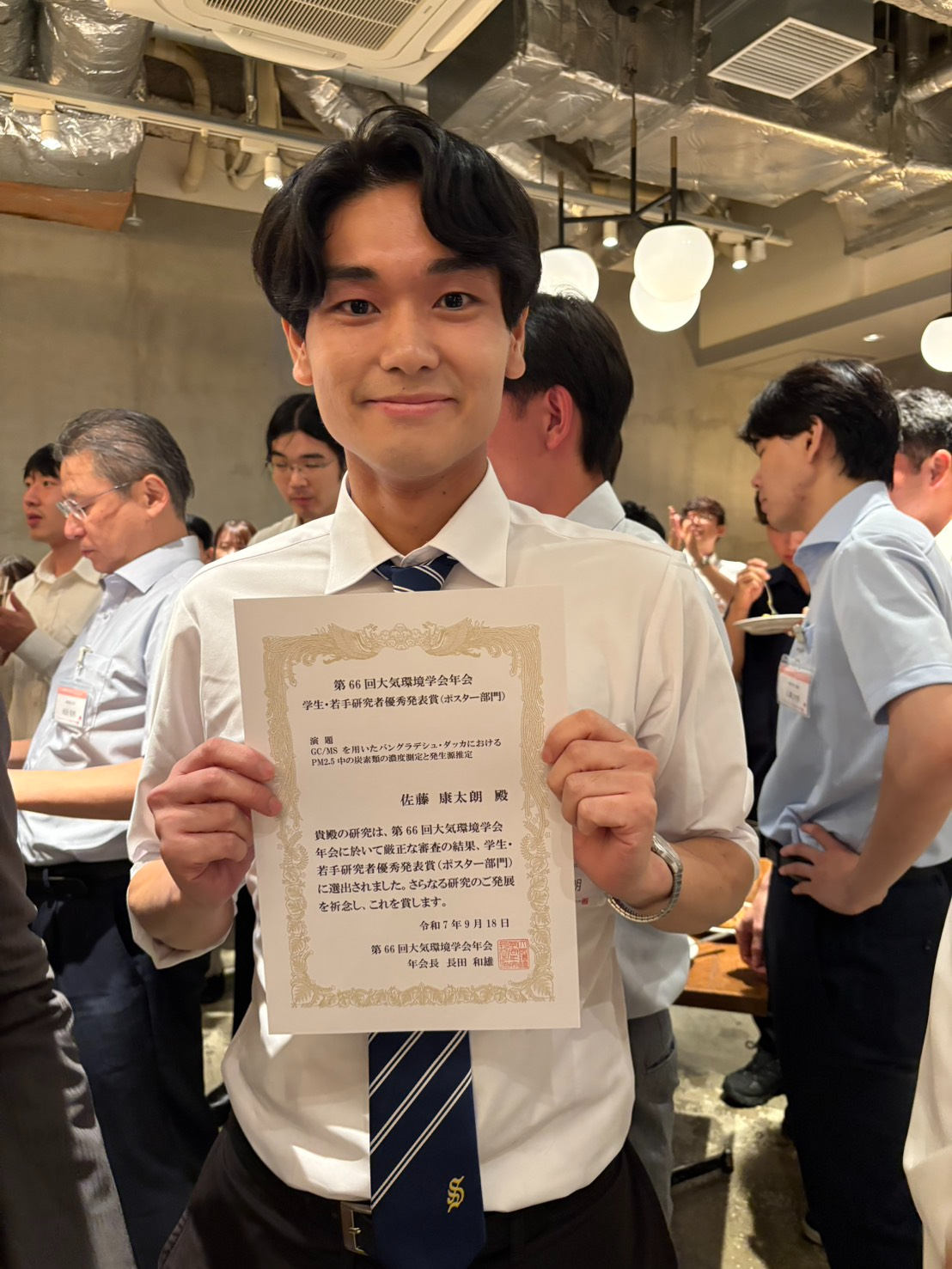 | 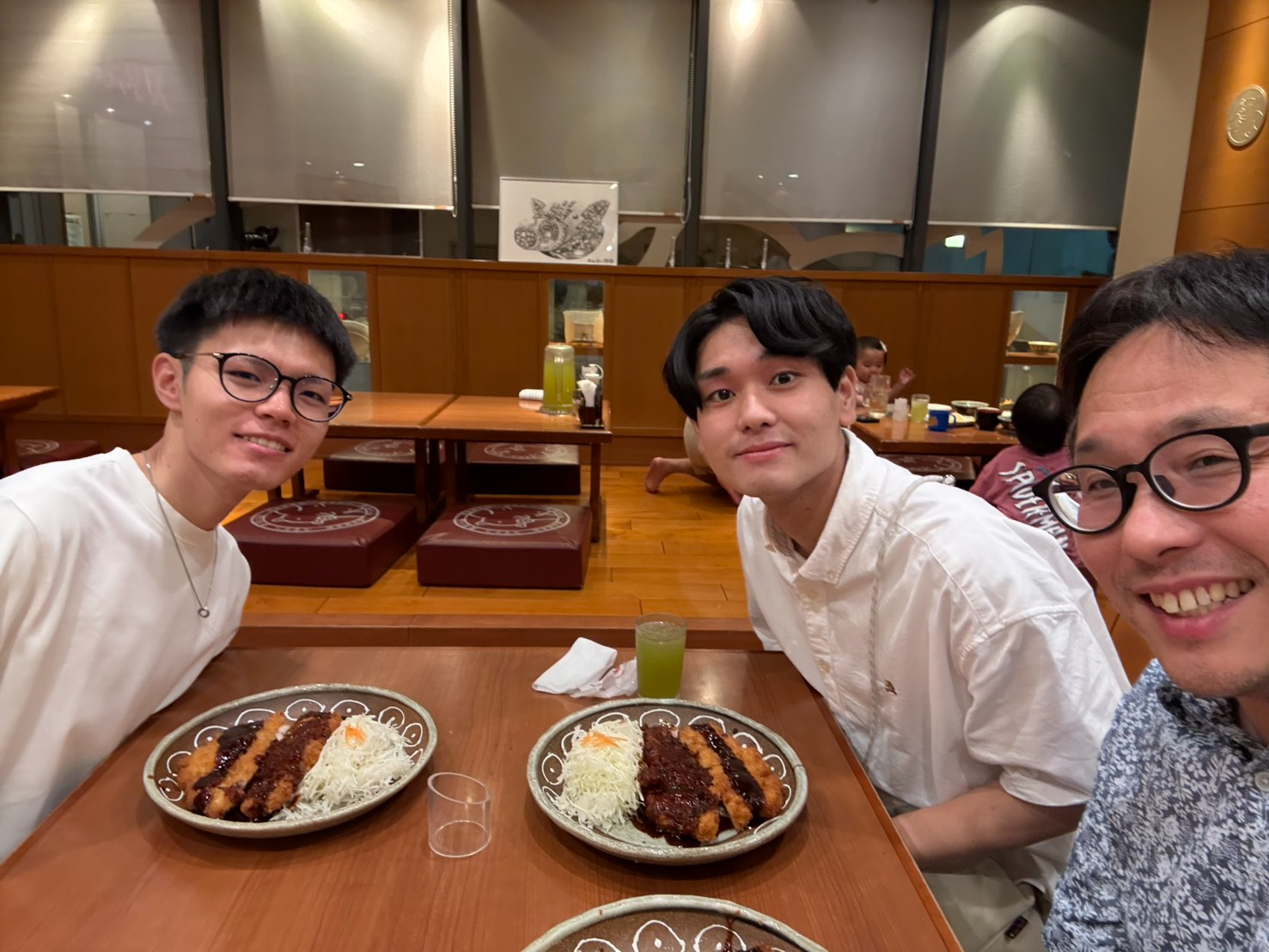 |